El Polín Spring
Introduction
Text-to-speech Audio
Images
El Polín Spring, recently restored by the Presidio Trust (image from National Park Service, Presidio)
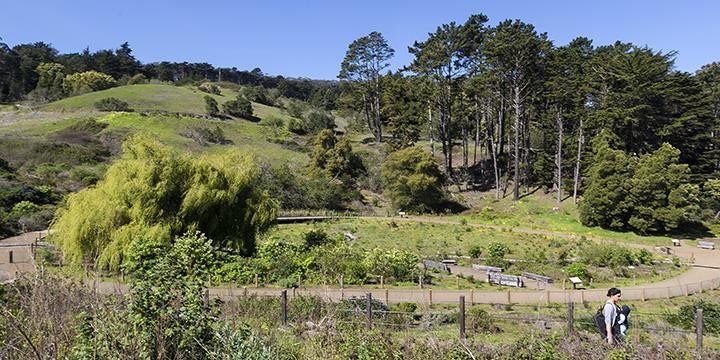
The boardwalk and picnic area around El Polín Spring (image from National Park Service, Presidio)
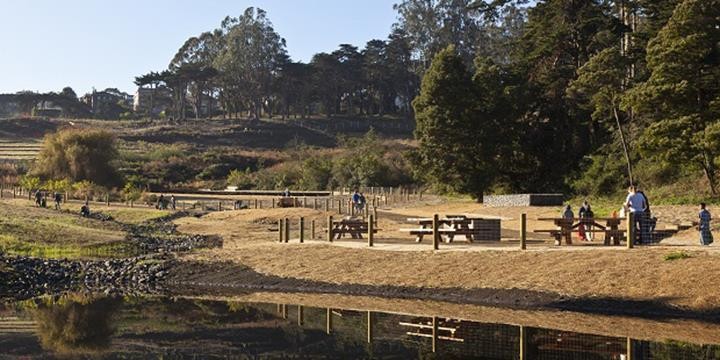
Part of El Polín Spring's Colonial-era archaeological site, an excavated water storage basin from an early 19th century adobe home (image from Golden Gate Audubon Society)
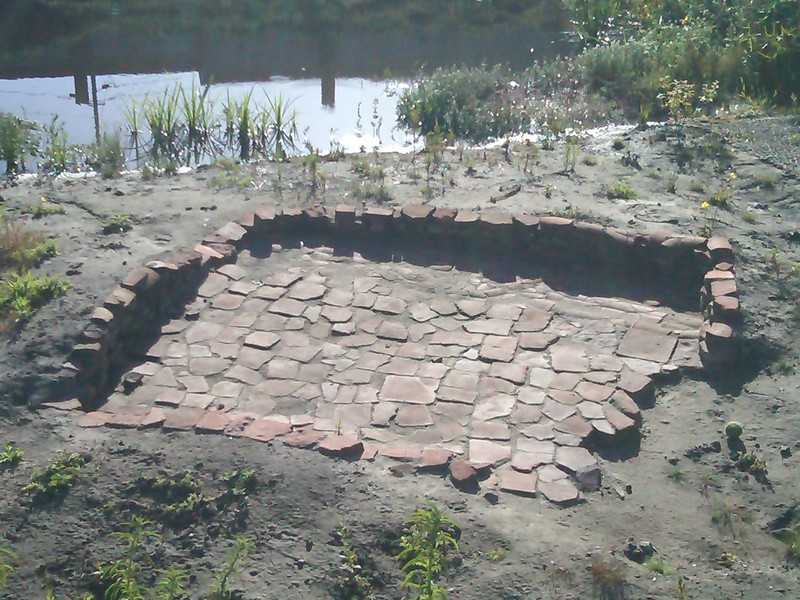
Restored ponds at the spring (image from Golden Gate Audubon Society)
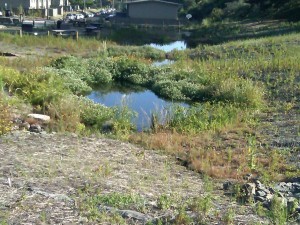
Watercourses at the spring, which make the area a hotspot for birdwatching (image from Golden Gate Audubon Society)
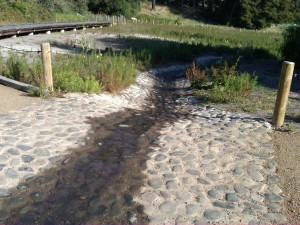
Hummingbird bathing at El Polín Spring (image from Golden Gate Audubon Society)
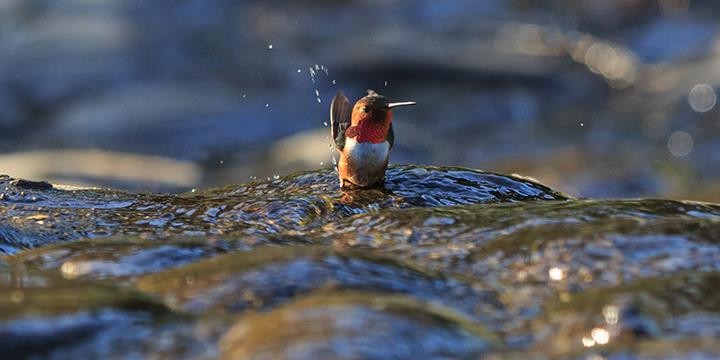
Sketch of Juana Briones by Robert Gebring, 1979 (image from the National Park Service, Presidio)
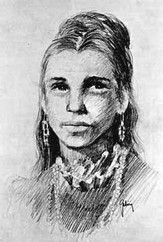
Backstory and Context
Text-to-speech Audio
Both colonial and Native American artifacts have been found at the site, the former represented by both imported and local ceramics, glass container fragments, and metal, and the latter represented by worked shell and stone. The settlers appear to have remained in residence even after the Presidio became a Mexican fortification, until the United States Army took control of the fort in 1849-1850. The Spanish military appears to have helped the family construct the house, indicating that the Briones were intentionally stationed outside the compound, possibly to guard the spring or the nearby quarry.
During and following the archaeological investigations at El Polín Spring, the Presidio Trust worked to restore the area's habitat, which soil studies had shown to vary between marshes, small streams, sand dunes, and hills. A series of small ponds and sunken spillways are now interspersed with wetlands, and the area is a hotspot for birdwatching. Some of the species sighted at El Polín include Great Blue Herons, Snowy Egrets, California Towhees, Black Phoebes, American Robins, White-crowned and Song Sparrows, Bushtits, Anna's and Allen's hummingbirds, Olive-sided and Ash-throated Flycatchers, Red-tailed Hawks, Violet-green Swallows, and a variety of finches.
Juana Briones
Aside from the site's significance in terms of understanding colonial life and colonists' relationships with Native Californians, the Briones house is tightly connected to the history of San Francisco itself. Marcos Briones had three daughters of European, African, and Native American descent: Juana, Maria de la Luz, and Guadalupe. Though all three played a part in the formation of the city, Juana Briones de Miranda (1802-1889) is the most historically prominent of the sisters. She was born in Villa Branciforte, which is now Santa Cruz, California, where her New Spanish (Mexican) mother and grandparents had settled with the De Anza Expedition in 1776.
Her father, Marcos, was a retired soldier, and moved to the Presidio after the death of his wife in 1812. Ten-year-old Juana, who had learned herbal medicine traditions (curandera) of Mexico from her mother, learned still more from Native Californian neighbors. In 1820, she married a Presidio cavalryman, Apolinario Miranda, and had eleven children, eight of whom survived infancy. Due to her husband's drunken abuse, Juana took her children to a new household at a location now known as Telegraph Hill, assisted by the local bishop and the mayor. She raised cattle and grew vegetables, creating a home business selling milk, produce, and hides in the community of Yerba Buena (now San Francisco).
During her
marriage, she had given medical aid to sailors, and after separation served as
nurse and midwife to Native American, English, and Mexican patients, even
traveling to Marin County in 1834 to manage a smallpox outbreak. When her
nephew, Pablo Briones, became a Marin County doctor, he attributed much of his
skill and knowledge base to his aunt Juana. Her international trade in hides
required more land for her cattle, and she bought 4,400 acres in 1844, the
Rancho la Purisima Concepcion in modern-day Los Altos and Palo Alto. In spite
of land ownership changes when Mexican California became part of the United
States in 1850, Juana Briones maintained not only her own land, but went before
the Supreme Court to keep land her deceased husband had left in San Francisco,
and won. Juana Briones died in 1889 and was buried in Menlo Park at Holy Cross
Cemetery.
Sources
The Tennessee Hollow Watershed Archaeology Project. Stanford University Research at the Presidio of San Francisco. May 01, 2003. Accessed December 11, 2016. http://web.stanford.edu/group/presidio/about.html.
Juana Briones. Presido of San Francisco, National Park Service. Accessed December 12, 2016. https://www.nps.gov/prsf/learn/historyculture/juana-briones.htm.
Anderson, David. Birding Hotspot: El Polin Spring. Golden Gate Audubon Society. Accessed December 12, 2016. http://goldengateaudubon.org/blog-posts/birding-hotspot-el-polin-spring/.
